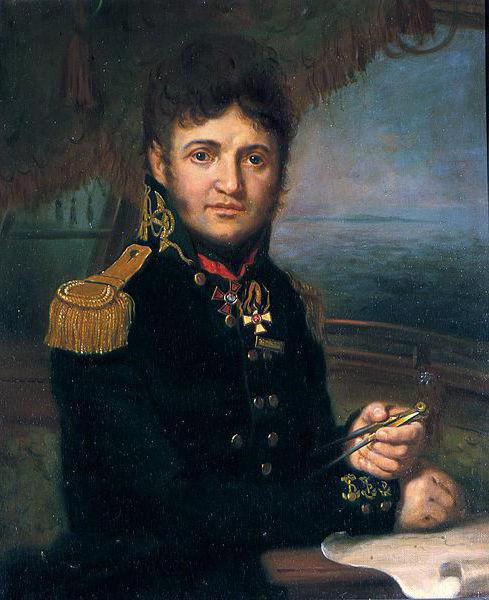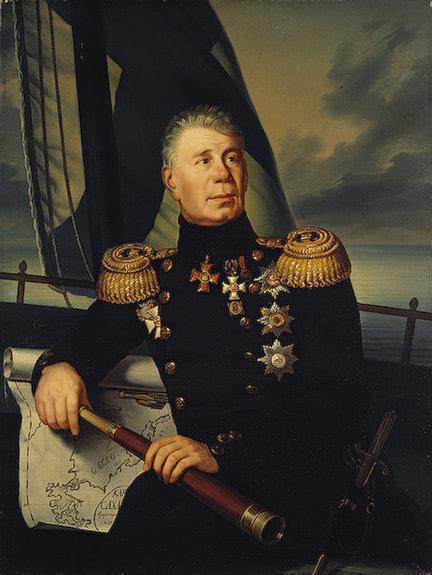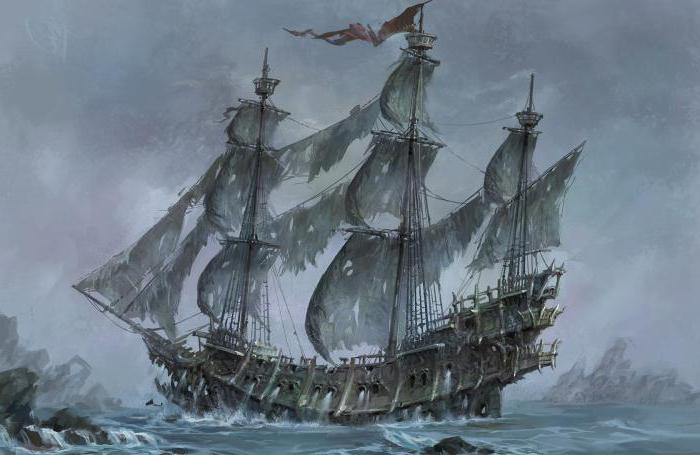After the victorious wars with Sweden and the Ottoman Empire, by the beginning of the 19th century, Russia secured the status of one of the leading world powers. But a world power cannot exist without a strong fleet, therefore, special attention was paid to its development. For example, Russian officers were sent to gain experience in the fleets of foreign countries. Briefly about the round-the-world travel of Kruzenshtern and Lisyansky you will learn in the process of reading the article.
Training
The idea of a round-the-world trip of Yuri Lisyansky and Ivan Kruzenshtern belonged to the latter. He began to ponder it immediately upon his return to Russia in 1799. The final version was presented at the beginning of 1802 and was quickly approved by the Minister of the Sea and the Minister of Commerce. Already on August 7, Kruzenshtern was appointed commander of the expedition. The deputy was his old friend, familiar since his studies at the Marine Corps, captain-lieutenant Lisyansky. Most of the costs of traveling around the world by Ivan Kruzenshtern and Yuri Lisyansky were paid by the Russian-American company. The merchants had their own interest, they hoped for the opening of a new promising sea route, along which goods could be delivered to China and Russian settlements in America.

Preparations for the first round-the-world voyage of Kruzenshtern and Lisyansky were carried out quickly, but carefully. It was decided not to build ships themselves, but to buy them abroad. In England, for seventeen thousand pounds, two three-masted sloops were acquired, called "Hope" and "Neva". Kruzenshtern himself commanded the first, and Lisyansky the second. There were purchased the necessary navigation instruments and other equipment for a long voyage. Crews were recruited exclusively from Russian volunteer sailors, despite the fact that Kruzenshtern was advised to invite experienced foreign sailors. This was an unusual decision, because the experience of distant ocean voyages in Russian ships and crews was not. In addition, the expedition included several scientists, as well as Ambassador Rezanov, who was given the task of establishing relations with Japan.
Europe and the Atlantic Ocean
July 26 (August 7 in a new style) 1803, the expedition ships left Kronstadt. Russian sailors embarking on their first round-the-world trip were solemnly escorted by local residents and crews of ships standing on the roadstead. Ten days later, the expedition reached Copenhagen, where the chronometers were adjusted at the observatory. September 26, "Hope" and "Neva" stopped in England, in Falmouth, where they lingered until October 5 to pierce the corps. The next stop was on the Canary Islands, where they stocked up on provisions and fresh water. After that we went to the shores of South America.

On November 26, the equator was first crossed by Russian ships. This event was marked by the solemn raising of the St. Andrew's flag and a salute of guns. In December, the expedition approached the island of St. Catherine off the coast of Brazil and stopped there. Neva needed to replace the mast, and repairs were delayed until the end of January. During this time, the expedition members got acquainted with the nature of a tropical country. Much was surprising, because in the southern tropical latitudes January is the hottest month, and all the variety of flora and fauna appeared before travelers. A detailed description of the island was compiled, corrections and corrections were made to the coast map, dozens of samples of various species of tropical plants were collected.
Pacific Ocean
Finally, the repair was completed, so the first Russian circumnavigation of Kruzenshtern and Lisyansky continued. On February 20, 1804, ships circled Cape Horn and continued their journey through the Pacific Ocean. It was not without incident: due to strong winds, rain and fog, the ships lost sight of each other. But the command of the expedition provided a similar opportunity, based on the stories of English sailors about the "frantic fifties" and "roaring forties" latitudes. In the event of such a development, it was decided to meet on Easter Island. Neva approached the island and, having waited there for three days, went to the Marquesas islands, where it met with Nadezhda near the island of Nukagiva.

It turned out that, having lost sight of Lisyansky’s ship , Kruzenshtern headed north to explore the local part of the ocean, but did not find new land. The island itself was described in detail, a collection of plants unknown to science was collected, and Lisyansky compiled a short dictionary of the native language. After that, the ships left Nukagiva, in May they crossed the equator a second time and headed for the Hawaiian Islands, where they divided. "Hope" went to Kamchatka, and "Neva" - to the northwestern shores of America.
Count Fedor Tolstoy
On the way to Kamchatka on one of the islands, the expedition broke up with one of the crew members, Fedor Tolstoy. He was the most famous representative of the Russian nobility of those years, and received his fame for his eccentric and provocative behavior. He did not change his character on the journey. In the end, Kruzenshtern was tired of Tolstoy's antics, so he landed him ashore. From there, Tolstoy reached the Aleutian Islands and Alaska, after which he returned back to Kamchatka and through the Far East, Siberia and the Urals arrived in St. Petersburg.
Kamchatka
In early July, "Hope" arrived in Petropavlovsk-Kamchatsky. By this time, relations between Kruzenshtern and Ambassador Rezanov had escalated to the limit. The conflict between them arose at the beginning of the journey and was due to the fact that, although Kruzenshtern was the commander of the ship, Rezanov was formally considered the head of the expedition, and his status became known only after leaving Kronstadt.
Such dual power simply could not but affect during the first round-the-world trip of Kruzenshtern and Lisyansky on crew discipline. It almost came to a riot, and the ambassador was forced to spend all his time in the cabin before arriving in Petropavlovsk-Kamchatsky. Having gone ashore, he immediately filed a complaint to the governor about the actions of Kruzenshtern and the crew. However, everything was resolved safely, and "Hope" went to sea and went to the shores of Japan.
Japan
September 26, 1804 the ship arrived at the port of Nagasaki. But the local authorities gave the Russian sailors a rather cold, even hostile reception. At first they were required to surrender guns and generally all firearms, only after that the ship was allowed to enter the bay. "Hope" stood in the harbor for six months, all this time the sailors were not even allowed to go ashore. In the end, the ambassador was informed that the emperor could not accept him. Moreover, Russian ships were henceforth forbidden to appear near the Japanese coast. The attempt to establish diplomatic relations ended in failure. However, this is not surprising, because Japan at that time strictly adhered to the policy of isolation and did not intend to abandon it. The ship returned to Petropavlovsk-Kamchatsky, where Rezanov was released from further participation in the voyage.
However, sailing to Japan was not in vain. Europeans were not well aware of that region, maps were full of inaccuracies and errors. Kruzenshtern compiled a description of the western coastline of the Japanese islands, made some amendments to the maps.
In July 1805, Nadezhda made another voyage, this time to the shores of Sakhalin. Passing from south to north of the island and trying to go around it, the expedition encountered fogs and shallow water. Kruzenshtern mistakenly decided that Sakhalin is a peninsula connected to the mainland by the isthmus, and turned back to Kamchatka. Having replenished the supply of provisions, having made the necessary repairs and loaded with furs, the sloop went to China at the end of September. On the way, several non-existent islands were removed from the maps, and the Nadezhda itself fell into the storm several times. In late autumn, the ship finally anchored in Macau and waited for Lisyansky to arrive.
The journey of the Neva
After the separation in the Hawaiian Islands, the Neva went to the coast of North America. There, the expedition primarily engaged in a hydrographic description of the coast. In addition, in the fall of 1804, Lisyansky was forced to interrupt scientific research on the island of Kodiak and provide assistance to Russian settlers in America who were attacked by the natives. Having solved the problems of the settlers and having completed the necessary astronomical observations in those places, the ship returned to Kodiak. In addition to hydrographic and astronomical observations, weather was monitored and a map of the Kodiak archipelago was compiled.
After wintering in 1805, exploration of the coast continued. In the summer, the Neva dropped anchor in the settlement of Novo-Arkhangelsk. Here the expedition spent about two months exploring the area. Exploration of coasts and forays into the islands was carried out, their detailed description was compiled. In particular, Lisyansky climbed Mount Echok, which was an extinct volcano. Observations were made about vegetation, temperature changes with height, samples of volcanic rocks were collected. Lisyansky discovered hot springs on Baranova Island, the water of which had healing properties. He also collected a lot of information about the life of the Indians and a collection of their household items.
After completing all the necessary research, Neva accepted the cargo of furs belonging to the Russian-American company, and on September 1 went to the shores of China. Before sailing, several dozen buckets of wild sorrel were prepared, which was a proven remedy for scurvy. Indeed, there were no cases of the disease in the future.
Lisyansky hoped to discover unexplored land and laid a route through those parts of the ocean that the ships had not traveled before. But these searches almost turned into trouble: on the night of October 3, the Neva ran aground. As it turned out in the morning, this saved the ship from a collision with a small island located in the center of the shallows. The island was given the name of Lisyansky. It was uninhabited and very low, in the dark of a tropical night it is very easy not to notice it, and a collision with a rocky shore will end in the death of the ship. Neva successfully took off the shallows and continued on its way.

Nevertheless, the voyages of Ivan Kruzenshtern and Yuri Lisyansky were delayed, the ship did not have time for the scheduled time, and Lisyansky decided to move south so that the sails were filled with a fair wind. Near the Philippines, the Neva was severely battered by a typhoon, and even had to throw part of the cargo overboard. Finally, in mid-November, sailors met the first Chinese ship. On November 21, 1805, the Neva arrived in Macau, where the Nadezhda was already waiting for it.
China
Upon arrival in Macau, Kruzenshtern informed the governor of the purpose of the visit and persuaded him to allow Nadezhda to stay in port until the Neva arrived, even though warships were prohibited from standing there. But he could not immediately persuade the local authorities to call both ships. Therefore, when the Neva approached Macau, he switched to it and went to the port with Lisyansky.
There were some difficulties with the sale of furs, as Chinese merchants were waiting for government permission to enter into trade relations with the Russians. Finally, with the help of a local English sales office, it was possible to sell the goods. Having bought Chinese goods (tea, silk, porcelain) and completed trading, the expedition was preparing to be dispatched, but then Chinese officials again intervened, forbidding the ships to leave the port until permission was obtained. A month later, permission was finally obtained, and on January 28, 1806 the Russian sailors set off.
Return
During sailing through Polynesia, the Indian and Atlantic Ocean, no geographical discoveries were made, since this route was widely known and has long been explored. However, several interesting events did happen. The ships went to the coast of Africa together, but, passing the Cape of Good Hope, fell into the fog and on April 3 lost sight of each other. According to agreements, it was supposed to meet again on the island of St. Helena. Upon arrival there, Kruzenshtern received the news that Russia and France were at war. This forced him to change the further route of the expedition around the world travel of Kruzenshtern and Lisyansky, and "Hope" went far from European shores, circling the British Isles.
Lisyansky decided to return independently, without going to the island of St. Helena. Having dropped anchor in Portsmouth and learning about the war, he nevertheless continued sailing through the English Channel. One way or another, both ships successfully completed the first round-the-world voyage of Kruzenshtern and Lisyansky. The Neva returned to Kronstadt on July 22, and the Hope arrived on August 7, 1806.
Value
The first Russian round-the-world trip of Kruzenshtern and Lisyansky opened a new page in geographical research. The expedition discovered new islands and erased nonexistent maps, clarified the coastline of North America and Japan, established the latitude and longitude of many points on the map. Updated maps of little-known places on the globe simplified further expeditions. After the first round-the-world voyage of Kruzenshtern and Lisyansky, a lot of information was received about the population of distant lands, about its customs, culture and way of life. The collected ethnographic material was transferred to the Academy of Sciences and served as a valuable source of information. During the trip, Chukchi and Ainu dictionaries were also compiled.
Studies of water temperature in the oceans, its salinity, currents, tides did not stop during the entire trip, in the future the information received will become one of the foundations of oceanography. Weather observations in different parts of the world will subsequently be important for the development of a science such as climatology. The value of the research and observations of the Russian expedition is that they were carried out systematically, using the most modern instruments, a similar approach at that time was innovative.

The information received during the round-the-world trip of Kruzenshtern and Lisyansky (the description was presented to your attention in the article) was published in the books of Kruzenshtern and Lisyansky. Atlases with the latest maps and illustrations of nature and cities of distant countries were attached to the compositions. These works, containing a lot of information about little-explored lands, aroused strong interest in Europe, were soon translated into Western European languages and published abroad.
The expedition was the first Russian round-the-world trip, sailors and officers gained the experience of long voyages for the first time, thereby forming the basis for further geographical discoveries under the Russian flag. In particular, the Nadezhda crew included Fadey Bellingshausen, the future discoverer of Antarctica, and Otto Kotzebue, who made another round-the-world trip in the future, but as an expedition commander.